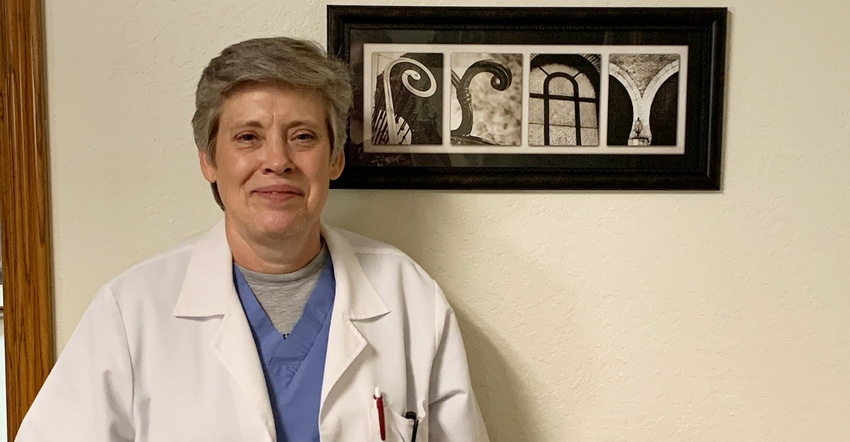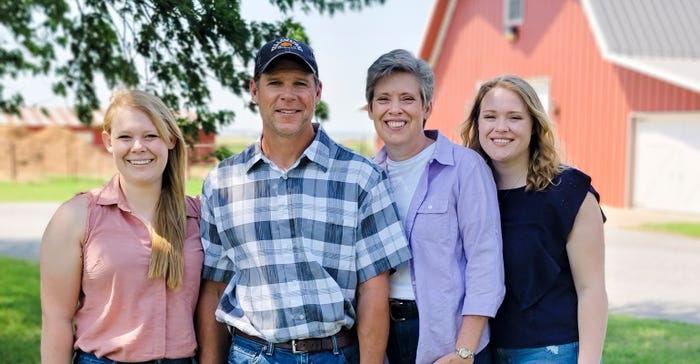
Healthcare in U.S. rural communities is often unavailable. In fact, of the more than 7,200 federally designated health professional shortage areas, three out of five are in rural areas, according to an AAMC-online article.
But that's not the case in Hydro, Oklahoma -- population 1,020. For more than 25 years, family practice physician Dr. Brenda Stutzman, DO, has been caring for its residents at the Hydro Medical Clinic. From the onset of medical school, her goal was to return to Hydro where she spent her summers growing up on her grandparent's farm.
"What I intended to do when I went to medical school (at Oklahoma State University- College of Osteopathic Medicine) was to become a family practice physician and come back to Hydro. That was my dream," she says. "The physician that was in Hydro prior (Dr. Ralph Buller) had been there for 35 years and was ready to retire. He waited for me to finish medical school, so I'd come out and take over his practice."
Rural care
According to the National Rural Health Association, family physicians comprise only 15% of the U.S. outpatient physician workforce nationwide, but they provide 42% of the care in rural areas.
Stutzman says it's hard to find people who want to practice in rural communities.
"I'm one of the rare people out there who still owns their private practice. I own my business, my building. Most physicians graduating from colleges now are employed by big companies and work in big clinics. They don't want to go to small rural communities because it's expensive and they don't make as much money," she says. "So, it's hard to find people who have a desire to live in a small community and do small-town care."
The whole family
What Stutzman likes most about rural healthcare is "getting to know the patients and their families. As a family practice doctor, it's not just one person I treat. I treat the whole family," she says. "It's important in medicine to know what are the underlying issues and the homelife."
Stutzman and her husband Karl, live nine miles west of Hydro on their family's century-old farm near Weatherford, where Karl is a row crop farmer and cattle producer. Although, Stutzman grew up in Yukon where both her parents were teachers, she says she spent her summer weekends on her grandfather's farm.
 Stutzman family, from left, Erika, Karl, Brenda and Kayla. (Photo by Shelley E. Huguley)
Stutzman family, from left, Erika, Karl, Brenda and Kayla. (Photo by Shelley E. Huguley)
"Hydro's home. I love small communities and the country, so this is where I wanted to settle."
Interesting transition
Having a history in Hydro made for an "interesting transition," when Stutzman first took over the practice. "People had known Dr. Buller for 35 years, and then here I come along. But the underlying thing on a lot of my patients' minds was that they knew me when I was born," she says with a laugh.
Stutzman says she never had to "build" her practice. "I had a full practice every day." When she first started, she also delivered babies at the Weatherford hospital. "I did that for 15 years, but as my girls (Erika and Kayla) got older, I needed to be with them, going to their school things. And I got tired of being up all day and all night, so I thought 15 years was enough."
Challenges
Practicing in a rural region comes with its challenges. For example, Stutzman cites the lack of community resources. "For example, we don’t have much in the way of counseling for psychology and have limited resources for underserved populations."
In Weatherford, there's a food resources clinic and the Agape Clinic, where physicians rotate through once a week and offer free medical care. "But compared to the city, there's more resources. There's not much of that out here."
See, Plant 22 underway, weather, input costs weigh heavy
Rural practices also lack specialists. "We have specialists that come out once or twice a month, like cardiology, orthopedics and ENT. But just to have somebody at the drop of a hat every day, we don't have that."
The closest specialists are officed about 75 miles away. For her elderly patients that distance can be difficult. "And in our rural communities, what you have the most of is older people, so that's a challenge."
Changes
One of the biggest changes in rural healthcare is telemedicine, a service that was widely used throughout COVID, Stutzman says. Although, it provided access to healthcare while in quarantine and during the stay-at-home order, she says she doesn't like it.
"You can't touch the patient. It's hard to see anything and often they don't know what to tell you. You can't even get their vital signs to see what's going on," she says. "Some things are good for telemedicine. A consult for psychiatric medicine for depression is easily done. Other problems are not so easy to treat. If you tell me you have a sore throat or an earache or abdominal pain, how am supposed to look through a computer and assess that and then give you medicine? It's not good," she says.
What's helpful is having a home health nurse on the other end who can do an assessment and translate the symptoms or issues, Stutzman says. But her preference is an office visit.
Incentives
In rural communities, the patient-to- primary care physician ratio is 39.8 physicians per 100,000 people, compared to 53.3 physicians per 100,000 in urban areas, according to AAMC.
To pique interest in rural healthcare, some medical schools have created a "rural healthcare" track. For example, the University of New Mexico School of Medicine offers a Rural and Underserved Populations (RUUP) program. Other medical schools require a rotation in a rural clinic, while others target medical students who grew up in a small town, providing them additional assistance, according to AAMC.
Stutzman doesn’t argue that rural healthcare is different. "It's not just a business," she says. "It's a way of life."
About the Author(s)
You May Also Like






